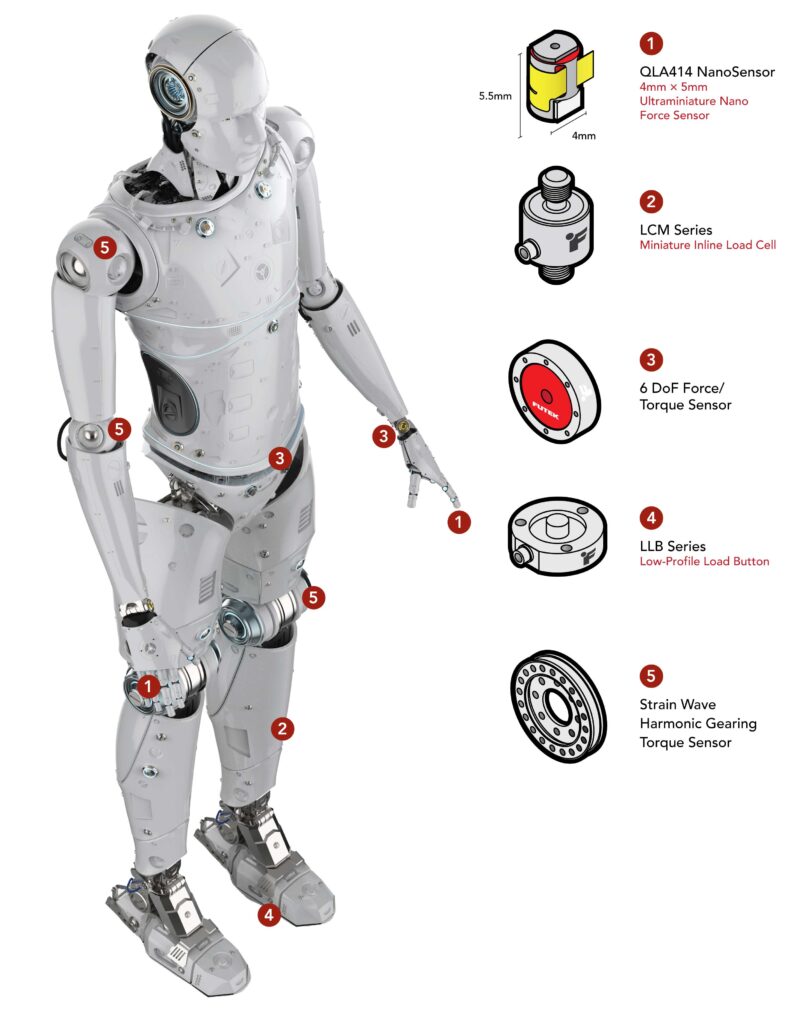Introduction
Look around you. The world, from the doorknobs we turn to the stairs we climb—was built by human hands, for human bodies. For decades, creating a machine that can navigate this world as seamlessly as we do has been the ultimate goal of robotics. This is the quest to create humanoid robots. No longer confined to science fiction, these astonishing machines are now taking their first steps into our factories, our homes, and our collective imagination.
Imagine a robot that can walk, talk, and use its hands like a human. These humanoid robots are no longer just science fiction. They are becoming real. This guide explains how they work and why they matter in simple terms.

How Do We Build a Humanoid Robot?
Making a humanoid robot is like building a person. We need a body, muscles, senses, and a brain.
1. We Start With the Body of humanoid robots
The body is the robot’s skeleton. Engineers build it from light metals. These metals are strong yet lightweight. This helps the robot move easily. The skeleton has joints like ours. This lets it bend and move like a human.
If you want to read about e-commerce, click here.
2. We Add Muscles of humanoid robots
Robots use motors instead of muscles. These motors are called actuators. They make the arms and legs move. Good motors let the robot walk smoothly. They help it pick up things without dropping them.
3. Humanoid Robots, We Give It Senses
Robots need to see and hear. We give them camera eyes. They use microphones for ears. Special sensors help them balance. These sensors work like our inner ear. They stop the robot from falling over. Other sensors in the hands help them feel what they touch.
4. We Humanoid Robots Create a Brain
The brain is computer software. It tells the robot what to do. Then, the brain takes information from the senses. It decides how to move. This lets the robot recognize faces. Moreover, it helps them follow commands. New robots can even learn from their mistakes.
Why Are Humanoid Robots Important?
These robots are special for many reasons. Then they can help us in our daily lives. Here’s what makes them useful:
They Fit Our World
Firstly, our world is made for people. We have stairs and doors. Additionally, we use tools made for human hands. Humanoid robots can use these same things. Then they don’t need special ramps or tools. This makes them perfect for our homes and workplaces.
They Do Hard Jobs
Secondly, some jobs are too dangerous for people. Robots can work in dangerous places. They can enter burning buildings. They can handle dangerous chemicals. Then this keeps people safe. They can also do boring jobs. This frees people for more interesting work.
They Can Help People
Thirdly, soon, robots might help in hospitals. They could assist nurses with patients, might help elderly people at home, and could remind them to take medicine. Moreover, some might even work as companions. Then this could help lonely people feel less alone.
What Problems Do We Need to Solve?
Moreover, Humanoid robots are not perfect yet. We still face big challenges:
Firstly, they Cost Too Much
Right now, these robots are very expensive. Only big companies can afford them. Then, we need to find ways to make them cheaper.
Secondly, they Need Better Batteries
Most robots can only work for a few hours. Then they need to recharge; we need better batteries that last longer.
Thirdly, we Need Safety Rules
Robots are safe. They should not harm people. Then, we need rules for how to use them properly.
Then, looking to the Future
Humanoid robots are getting better every year. Soon, you might see them in stores. Then they might work in factories. They could help in schools. Some might even become home helpers.
This technology will change our world. It will create new jobs. Some old jobs might disappear. We need to prepare for these changes. We should teach people how to work with robots.
The future with robots looks exciting, and could make our lives easier. Then they could do dangerous jobs for us. They might even help us live better lives.
Frequently Asked Questions
What can humanoid robots do right now?
Today’s robots can walk, climb stairs, and pick up objects. Then they can recognize faces and follow voice commands. Some can even dance and do simple tasks.
How much do they cost?
Prices range from $50,000 to over $250,000. Moreover, some research robots cost millions. Then, prices are coming down each year.
Are they safe to be around?
Yes, most have safety features. They can sense when people are near. Then they will stop moving if someone gets too close.
Can they work in bad weather?
Most work best indoors. Moreover, newer models can handle some rain and wind. But they are not waterproof yet.
Will they take people’s jobs?
They will change jobs more than they take them. Moreover, they will do boring or dangerous work. Then this will let people focus on more creative tasks.
When can I have one at home?
Probably in 5-10 years. Firstly, they need to become cheaper and more reliable. Then they will start in businesses before coming to homes.
Can they think for themselves?
Not really. They follow programs and learn patterns. They don’t have real thoughts or feelings like people.
Additionally, this new technology brings both opportunities and challenges. Understanding it helps us get ready for the future. Moreover, the age of humanoid robots is coming. With smart planning, it can make all our lives better.
